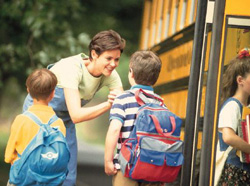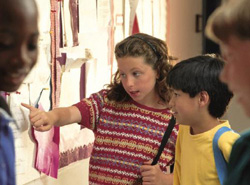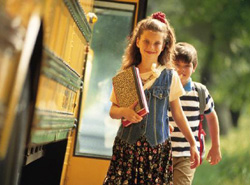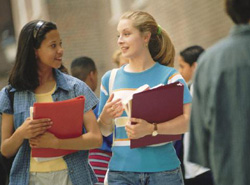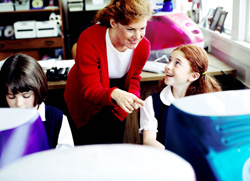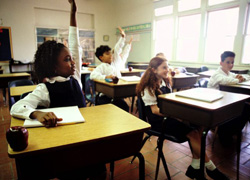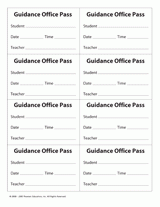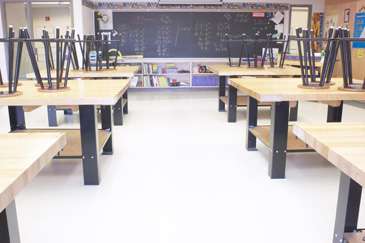The articles and advice featured in this slideshow can help you prepare for your first day of teaching. You'll find teaching methods and strategies for new teachers, as well as answers to frequently asked questions.
Learn how to get off to a great start communicating with parents during the first week of school. This article describes ways to introduce yourself to parents, and offers helpful tips for writing letters to send home with students. It also discusses the benefits of getting parents involved in their children's school.
This article is full of ideas on how to introduce yourself to your students and get to know one another. Alleviate your nervousness as a new teacher and calm your students' fears by focusing on four areas: personality, building a community, routines and schedules, and self-determination.
This article offers advice to help new teachers prepare for the first days of school. Find answers to common concerns about seating arrangements, what to wear, how to welcome and introduce yourself to new students, and how to learn students' names quickly.
The tips in this article will help you make a great impression on the first day of school. Learn how to set first-day goals, and find an effective teaching stance that fits your personality.
Prepare yourself for your first day of teaching at the elementary level with the suggestions and activities in this article. New teachers will find tips and ideas for getting to know their students, discussing rules and procedures, assigning classroom jobs, and organizing first-day tasks.
The suggested sequence of first-day tasks and procedures will help new teachers prepare for their first day of teaching at the secondary level. This article includes tips on outlining the syllabus, ideas for homework assignments, and suggestions for fun activities.
Discover a variety of options you can offer students when it comes to classroom assignments, presentations, assessment, and homework. Personalize your classroom with suggested teaching methods and strategies that give each student a choice.
Create a warm and inviting classroom environment for the first day of school. This article provides tips for creating a physical learning environment through different configurations of students' desks.
"Bully-proofing" your classroom creates a physically and emotionally safe environment for students. The tips in this article will help you set behavior expectations, teach students how to handle minor incidents on their own, and establish a safe way for students to communicate with you and their peers about acts of bullying.
Use icebreakers during the first few weeks of school to help students get to know you and each other. This article suggests several fun, educational activities that will build community in your classroom and help you establish a strong student-teacher rapport. Icebreakers will help your students learn each other's names, discover similarities, and reveal interests.

